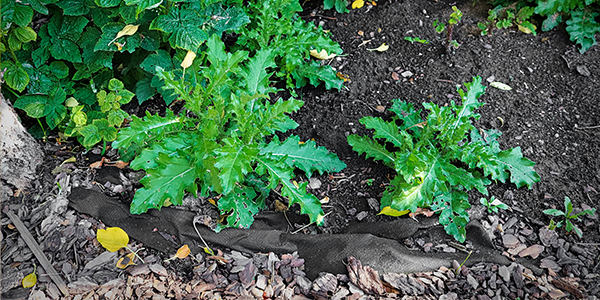An invasive plant is an introduced organism that becomes overpopulated and negatively alters its new environment. This is especially true if the organism has no competition in that environment. Learn about their impact on the environment, the types of invasive plants that proliferate in Ohio, and how to deal with them if they are overpopulating your garden or community.
Why are Invasive Plants Problematic?
The main issue with invasive plants is the damage they do to the ecosystem they overpopulate. And they often proliferate in the U.S. due directly to human action. In the 1800s, invasive plants were often used for aesthetic value in gardens or were purposely transplanted into an ecosystem to combat other issues. For example, Melaleuca trees were brought in from Australia and planted in the Florida Everglades to draw water from the ground. This led to aggressive overpopulation and irreversible alterations of the natural environment.
Invasive plants severely affect the environment because they slowly replace native plants. And more importantly, invasive plants do not benefit their new habitat in the same way as natives. They do not produce food for the diverse set of wildlife that lives there and the root systems have a completely different function which can enhance erosion. As a result, animal and plant diversity decreases and the ecosystem changes dramatically.

Types of Invasive Plants in Ohio
Some of these offenders seem like native plants because they are seamlessly present in so many landscapes. Ohio has plenty of invasive plants to watch out for and can include:
- Bush Honeysuckle: It is an ornamental plant that arrived in the late 1800s from Asia and eastern Russia. The root system is shallow which enables them to outcompete other plants.
- Creeping Thistle: This plant is an accidental invasive believed to be brought through farm seed shipments. They often crop up in lawns as a weed.
- Garlic Mustard: This herb that was introduced from Europe for herbal and medicinal purposes in the mid-1800s.
- Japanese Honeysuckle: It is a vine that is considered semi-evergreen and can grow to be more than 30 feet long. It is a vigorous plant that is fast-growing and can cover large areas and displace native plants.
- Winter Creeper: This ground cover is native to China and East Asia. It grows in dense mats that can smother natives, including trees.
What to Do if They are on Your Property
If you are starting to notice any of the aforementioned plants in your lawn, garden, or community, there are steps you can take to curtail their spread. If they are proliferating in your property, hand removal is the best option. Just be sure that you remove the entire plant including the roots with a shovel or trowel. You should not compost them, but instead, bag them up and seal the bag so they don't release any seed. If you notice that your community is filled with these plants in areas such as parks, swale areas, medians, and more, there are a few things you can do. You should alert your local officials and environmentalist groups. They often will do invasive species round-up excursions to help control the issues. Another option would be to increase native plants in your area to help boost biodiversity.
At Kurtz Bros., Inc., we are always advocating for use of native plants and organic soil, mulch, and compost to help boost biodiversity in your lawn. Contact us if you have any questions; we would be happy to help!
